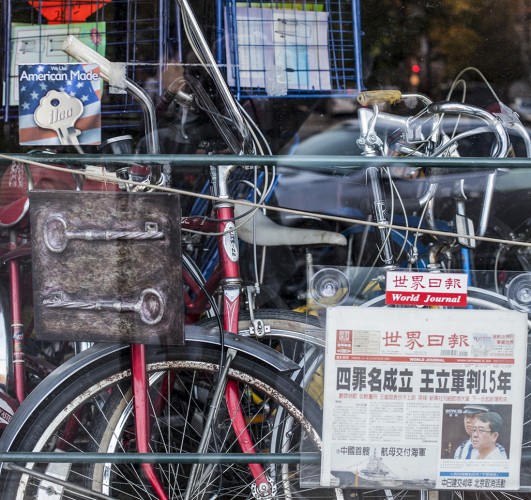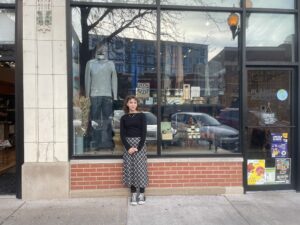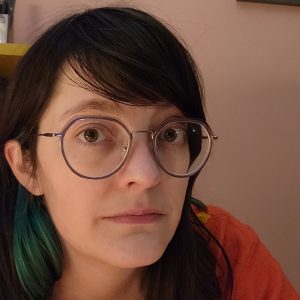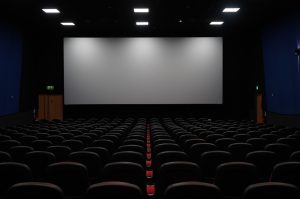
From behind the bar, Steve Badauskas looks at the front door and buzzes in another customer. At Halsted and 32nd streets, Bernice’s Tavern has been buzzing in patrons for years. According to Badauskas, the owner of Bernice’s, the buzzer went in because of the neighborhood’s violence and racial tensions in the late 1960s.
Back then, all the bars in Bridgeport had buzzers.
Now the buzzer is a novelty. The crowd elbowing into the bar on a typical night is a melange of faces, different races, young and old. Badauskas likes being able to manage the crowd on a busy Saturday night, but these days anybody sober enough to stand gets buzzed in.
Bridgeport has long been a diverse community, yet through much of the last century, lines were drawn from block to block. Depending on their ethnic or racial makeup, people knew where they could or couldn’t go without being harassed. Slowly those lines are starting to blur and the neighborhood’s character is transforming. The scene at Bernice’s is at the vanguard of that metamorphosis.
“I always got a warning about this neighborhood,” said Lisa Martin, who has lived in Bridgeport for 10 years with her husband, who is African American. “They said it was a great neighborhood, a family neighborhood, but there was a racial issue.”
The blue collar industry that once thrived nearby brought immigrants from all over the world. Tanneries, a quarry, slaughterhouses, breweries, metal works, are just a few types of manufacturing that once thrived on the banks of the Illinois and Michigan Canal.
John Aranza, 73, has lived in Bridgeport his entire life. He remembers when there were dividing lines between the ethnic areas. The blocks were divided into a quilt of country equivalents. “Every community had their own grocery, butcher, baker,” Aranza says. Now the “little enclaves of ethnicities have broke down.”
On the dividing line between the Lithuanian community and the Polish community was the New National Auditorium frequently used as a wedding hall. Bridgeporters called it the “Bucket of Blood.” It got that name because of fist fights that would break out between different groups after the parties got drunk.
Within this small area there were at least 19 different places of worship. Twelve of them were Catholic parishes. Each catered to a different ethnic or cultural background.
In 1990 the Catholic Diocese shuttered six churches in the neighborhood. This resulted in parishes marrying and taking on different ethnic groups, possibly influencing a more positive relationship between groups in the neighborhood.
In the book “Images of America; Bridgeport,” JoAnne Gazarek Bloom, Maureen Sullivan and Daniel Pogorzelski write that several churches now hold Mass and confession in Polish and Spanish. Italian and Mexican parishes have also been combined.
Though many types of people have settled here for more than a hundred years two groups knew to stay away. Asians and African Americans did not cross 26th street or Wentworth Ave. The area’s reputation for being racially intolerant became national news in 1998 when Leonard Clark, a young African American, was brutally beaten on the edge of Bridgeport’s boundaries.
The incident moved Mayor Richard Daley, a Bridgeport native, to denounce the assault and call for tolerance and change.
Larry Durham who is African American, remembers Bridgeport from the 1970s. Back then he rarely came into the neighborhood and left as quickly as his business was done. “Things have changed a lot from what it was back in my day,” Durham said. “There used to be a lot of prejudice. Now it feels more welcoming.”
Raul Gonzalez, 34, has lived in the area for most of his life and has been coming into Bridgeport for White Sox games since he was a kid. Gonzalez thinks the streets are safer now because the housing projects that were once at 31st and Halsted streets are gone. “Now we can sit and relax without fear that someone is going to come up and jack us,” Gonzalez said. “Now it’s like your going to a place up north. It’s mellow. It’s really mellow.”
According to the 2010 U.S. Census Report, Hispanics and Asians now make up 60 percent of the population, a huge change for a neighborhood once known as a whites only enclave.
A 2008 study by DePaul University showed Bridgeport to be the fourth most diverse neighborhood in Chicago. That study took into account age and income as well as ethnicity.
Although the faces may have changed, Bridgeport is still a middle class neighborhood. According to the San Francisco-based real estate firm Trulia the median price for a home in Bridgeport in the quarter ending October 12 was $210,000, 1.41 percent lower than the Chicago average.
Over the last 10 years Bridgeport’s real estate values have been consistent with the overall real estate market in Chicago.
“It’s a soft gentrification,” said Maureen Sullivan, a Bridgeport native who co-authored a book about its history and is enthusiastic about the changing demographic. “Its not like what happened in Wicker Park where it completely changed from 1989 to 91.”
For Sullivan the essential make up of the community is still the same. Mostly it’s working class and middle class people; immigrants who want a nice home and to have their kids succeed.
She’s seen new residents fall in love with the neighborhood. They like the different types of people and age groups, and it doesn’t take long before they consider it their home and begin community organizations to improve the area.
“The people who started the Bridgeport citizens group are new arrivals,” Sullivan said. “They came down here and want to stay, so they started the group to fight against the gang problem.”
Missy Ritze has lived in the neighborhood for a little more than a year with her husband and daughter. They came into the area because she says it’s “a hidden gem of the city.”
“It’s still very blue collar,” Ritze said. “I think that every single person that lives on my block is either in a union or does some kind of skilled trade.”
The lifelong residents of Bridgeport have not all been eager to see newcomers. The older residents lament the disappearing character of thir community. New home owners recognize there’s a challenge to becoming a part of the community.
“When I moved here they were not welcoming at first,” Ritze said. “ They’re just very territorial. ‘This is my block and who are you and why are you living here?’ kind of thing. They like to keep it old school.”
John Aranza misses the Bridgeport he grew up in. The little grocery store is gone where his family had a tab. The factory whistle that would call the neighborhood to dinner is now silent. People have moved or died and the faces have changed.
For Aranza, it takes a lifetime to become a part of the neighborhood. “It takes talking over the backyard fences.” Aranza said. “It takes going to the same church.” It takes a shared experience of life.
On his block that was once entirely Polish he lists seven different ethnicities living there now. Even though he isn’t happy about the transforming character of his neighborhood he says he knows most of his neighbors.
“There’s been changes but there’s still some of the things that make it a community,” Aranza said. “I like to call it Chicago’s last original neighborhood.”

















Be First to Comment